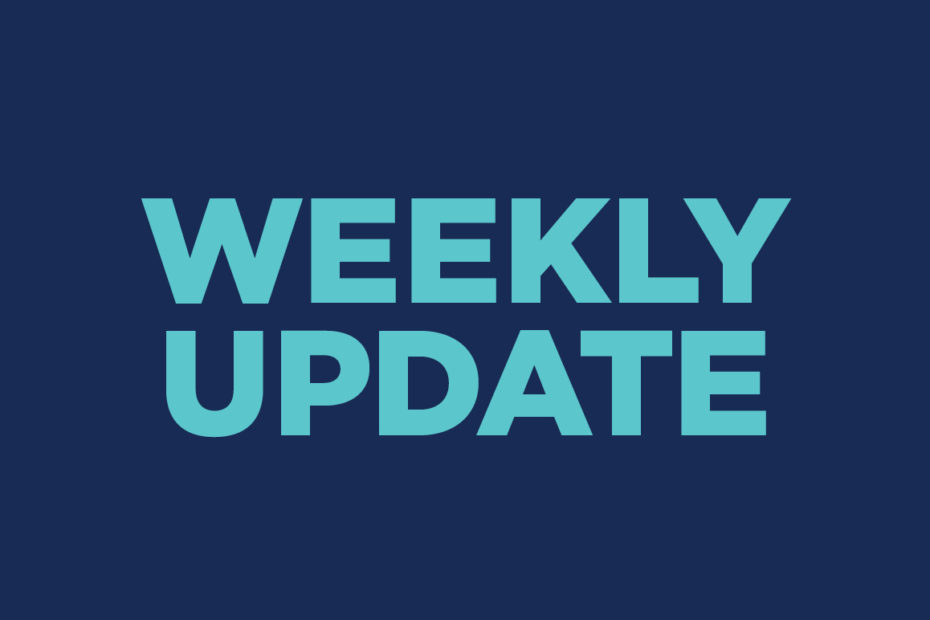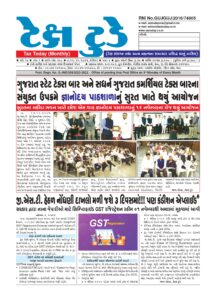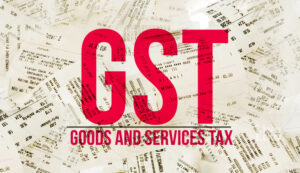GST WEEKLY UPDATE : 44/2024-25 (02.02.2025) By CA Vipul Khandhar

-By CA Vipul Khandhar
- Attention – Hard – Locking of auto-populated liability in GSTR-3B:
The restricting the editing of auto-populated liability in GSTR-3B from the January 2025 tax period.
- In order to assist taxpayers in filing their returns and minimizing human errors, GSTN has continuously improving the GST return filing process and in this endeavor the GST Portal now provides a pre-filled GSTR-3B form, where the tax liability is auto-populated from the declared supplies in GSTR-1/ GSTR-1A/ IFF by the supplier, while the Input Tax Credit (ITC) is auto-populated from GSTR-2B. A detailed system generated pdf of the auto populated GSTR-3B is also provided to all the taxpayers.
- Now, taxpayers also have a facility to amend their incorrectly declared outward supplies in GSTR-1/IFF through GSTR-1A, allowing them an opportunity to correct their liabilities before filing their GSTR-3B. Additionally, to manage inward supplies and ensure accurate ITC claims in GSTR-3B, taxpayers have the option to take informed actions of accept/reject/pending on inward supplies via the Invoice Management System (IMS) which is now available to the taxpayers.
- It may be noted that tentatively from January 2025 tax period, the GST Portal is going to restrict making changes in auto-populated liability in pre-filled GSTR-3B from GSTR-1/1A/IFF to further enhance accuracy in return filing. It is once again suggested hereby that in case any change is required in auto-populated liability, the same may please be handled through GSTR-1A.
- However, locking of auto-populated ITC in GSTR-3B, after the roll out of IMS, will be implemented from a later date. For the same a separate advisory would be issued after addressing all the issues related to IMS, raised by the trade.
However, various requests have been received from the trade seeking time for the same. Therefore, the decision of making non-editable of auto-populated liability in GSTR-3B is currently not being implemented from January tax period, on the GST Portal.
- Advisory on the Introduction of E-Way Bill (EWB) for Gold in Kerala State:
It is hereby informed that a new option for generating E-Way Bills (EWB) for gold has been introduced in the EWB system, effective from January 20, 2025. This feature has been made available to facilitate taxpayers in Kerala State to generate EWB for goods classified under Chapter 71, excluding Imitation Jewelry, for intrastate movement, in compliance with the notification issued by the Government of Kerala.
Key Points for Taxpayers:
- Scope of Coverage:
- a) The EWB can be generated for goods covered under Chapter 71, excluding HSN 7117 (Imitation Jewellery) under the “EWB for gold” option only.
- b) This feature is applicable only for intrastate movement of such goods within Kerala.
- Generation of EWB for Imitation Jewellery (HSN 7117):
- a) Taxpayers can continue to generate EWB for goods under HSN 7117 (Imitation Jewellery)using the usual option in the EWB system.
For further assistance or queries related to this update, taxpayers may contact the GST Helpdesk or refer to the detailed user guide available on the EWB portal.
This advisory is issued for the information and compliance of all stakeholders.
- Budget proposal (it will effective from the date of enactment of finance bill -2025:
Input tax credit (ITC)
- Retrospective amendment introduced (from 1 July 2017) subsequent to Supreme Court ruling [Safari Retreats Pvt Ltd]
- Term ‘plant or machinery’ proposed to be amended to ‘plant and machinery’ in section 17(5)(d) of CGST Act Now ‘Input Service Distributor’ enabled to distribute ITC on all reverse charge transactions (from 1 April 2025)
Enabling provisions for Invoice Management System (IMS) proposed from a date to be notified
- IMS facility introduced by GSTN on 1 October 2024
- Process related provisions expected to be prescribed in Rules
- Acceptance of credit note by recipient mandated to reduce tax liability of the supplier
- Reversal of ITC by recipient necessary to claim adjustment by way of credit notes
- Filing of GSTR-3B to be restricted until GSTR-2B is finalised
Introduction of ‘Track and Trace Mechanism’ from a date to be notified
- System proposed requiring Unique Identification Marking on specified goods/ class of persons
- Additional compliances specified
- Penalty of 10% of tax or INR 2 lakhs (whichever is higher) for failure to comply
- Process related provisions expected to be prescribed in Rules
Other key proposals (date to be notified)
· Time of supply of vouchers (both specific and general purpose) to be the date of redemption of voucher
· Requirement of 20% pre-deposit now extended to appeals against orders levying only penalty
· Retrospective amendment in Schedule III clarifying supply of goods warehoused in SEZ/ FTWZ as ‘no supply’
· Definition of ‘Local fund’ and ‘Municipal fund’ introduced to clarify scope of ‘Local authority’
Custom amendment:
Rationalization of Tariff structure (with effect from 2 February 2025)
- Reduction from 22 to 8 tariff rates including zero rate over last two budgets
- Basic Customs Duty has been reduced for certain goods
- To maintain the same effective rate of tax, Agriculture Infrastructure and Development Cess (AIDC) levied/ increased
- Goods imported will now attract not more than one cess or surcharge
- Social Welfare Surcharge (SWS) proposed to be exempted on 82 tariff line items
Reduction in Basic Customs Duty rate to support domestic manufacturing and value addition for certain specified goods (with effect from 2 February 2025)
- Critical minerals
- Textile products
- Electronic goods
Capital goods for EV battery and mobile phone battery manufacturing
Validity period of exemption for most products due to expire on 31 March 2025 extended for a further period as notified
Legislative and procedural changes (from date of enactment of Finance Bill 2025 unless otherwise specified)
- Time limit of two years for finalization of provisional assessment (except in certain cases), further extendable by one year
- For pending cases, time limit to apply from date of assent of Finance Bill
- Voluntary revision of import/ export documents permitted after clearance, subject to conditions
- Time limit within which revision can be done to be prescribed
- Revised filing also possible for reduction of original customs liability
- Settlement Commission to be replaced by Interim Board, with take effect from 1 April 2025
Relaxation in compliances for Import of Goods at Concessional Rate of Duty (IGCR), effective from 2 February 2025
- Time limit for fulfilling end-use increased from six months to one year
- Return filing frequency changed from monthly to quarterly
Disclaimer:
This publication contains information for general guidance only. It is not intended to address the circumstances of any particular individual or entity. Although the best of endeavour has been made to provide the provisions in a simpler and accurate form, there is no substitute to detailed research with regard to the specific situation of a particular individual or entity. We do not accept any responsibility for loss incurred by any person for acting or refraining to act as a result of any matter in this publication.
(Author is a well known Chartered Accountant practicing at Ahmedabad)





